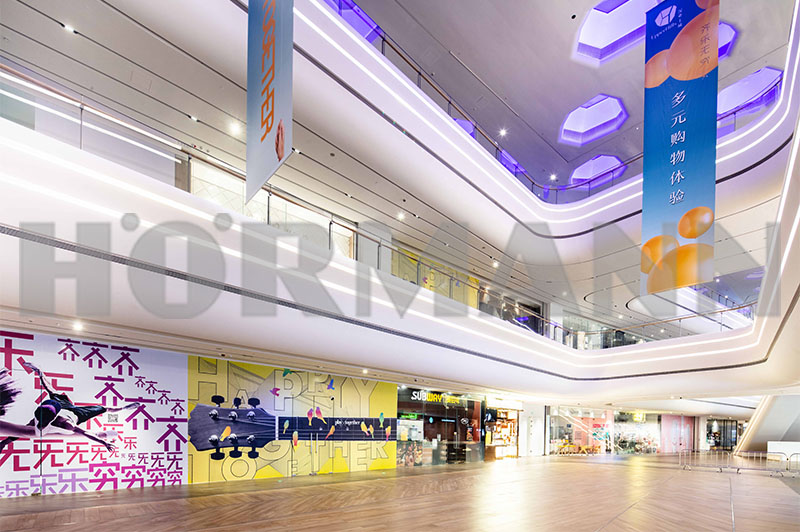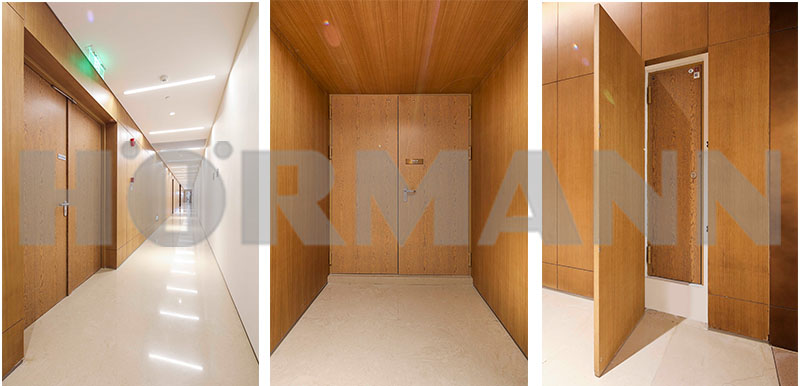From the UpperHills Complex, Shenzhen presents itself as
the new global centre for consumer electronics – and the worldfamous architects
from SOM provided the appropriate architectural backdrop. In terms of urban
planning, the ensemble is closely intertwined with its location, but the design
is as strictly international as the local hightech industry.

In 1950, Shenzhen had 3000 residents and was hardly more
than a fishing village, but had an attractive location on the border to Hong
Kong. At that time, Mao's successor Deng Xiaoping decided to create a special
economic zone. He formulated his intentions poetically: “Let the west wind in.
Wealth is glorious.” Today, Shenzhen has almost twelve million residents and
the highest income per capita in China. Seen in this respect, Shenzhen has
basked thoroughly in Deng Xiaoping's “glory”. His open-door policy was the
starting shot of a construction boom that could only be called extreme, even
from a Chinese perspective. The “UpperHills” project from SOM | Skidmore Owings
Merrill is a current high point, but by no means represents the end.
Conceptually noteworthy
On its own, a typical mixed use with offices and hotels,
flats, restaurants and shopping zones would be nothing new in such a global
design. The CEEC, the Consumer Electronics Exchange and Exhibition Centre, is
what makes this concept so noteworthy. Initiated by the provincial government,
this centre will demonstrate on a global scale (both online and at its location
in Shenzhen) how capable and innovative the city is as a hub for international
consumer electronics. Along with the architecture, UpperHills will become a
symbol of this Chinese claim to leadership. Anyone who uses a mobile phone
these days is connected to Shenzhen. The US company Apple manufactures here,
Huawei is currently expanding on the smartphone market and numerous other
Chinese companies produce components for the global telecommunications market.
Shenzhen's economy is racing from record to record. This desire for records can
be clearly seen in the cityscape. Buildings here have international fame and
the local record of 600 metres height held by the Pingan International
Finance Centre is the work of the large US office Kohn Pedersen Fox.

Design simplicity
In contrast, the two SOM towers from “UpperHills” appear
almost modest with just a height of 299 and 388 metres. Nevertheless, they
are a landmark that is immensely important for the city. The project connects
the two largest parks in the city, Lotus Hill and Beacon Hill, thus creating a
green belt. SOM design partner Gary Haney uses his personal experience in
single-handed sailing to explain the design simplicity. If you are out alone on
a small boot, then you know that every construction component must be scaled
down as far as possible, whilst maintaining its strength. This type of
reduction can also produce sound architecture. He consistently designed the
higher tower without any columns not to obstruct the view of the greenery. And
for both towers the storey-high facade panes with a width of three metres
produce the greatest amount of transparency that is technically possible.
Whereas the smaller tower only contains offices, the larger tower includes a
Mandarin Oriental hotel on floors 67 to 79. Here, hotel guests have a view of a
plaza raised above street level. This area connects the two towers, the
residential blocks, the CEEC and the Mandarin Oriental conference centre. On
the levels below, visitors find a variety of restaurant zones, luxury shops and
a shopping centre, all done up with a modern and global interior design. There,
successful Shenzhen residents can turn their freshly acquired wealth into consumer
goods, in line with Deng Xiaoping's famous quote.

Hörmann expertise:
Fire-rated doors and garage doors
With a gross floor area of 1,200,000 square metres,
UpperHills is certainly one of the largest construction projects in Shenzhen.
Such a project requires an accordingly large number of fire-rated doors, which
were supplied by Hörmann. Over 8000 doors were installed in the various
buildings in the complex. All doors and frames are made of steel. A special
feature: Some of the door leaves come with different cladding materials. For
example, the administration areas have a surface finish made of oak laminate.
The entrance to the IMAX cinema is much more extravagant. This door has a
combination of matt wood and reflective metal surface finishes that have been
joined to create polygons of various shapes. The door leaves for both the
single-leaf and double-leaf versions have a thickness of 60 millimetres,
putting them in fire-resistance class B and security class C in accordance with
the Chinese National Standard. Furthermore, Hörmann has provided sectional
doors with 40-mm-thick PU-foam insulation for this project.


Location: 5001 Huanggang Road, Futian District,
Shenzhen, CN
Hörmann products: cladded fire-rated doors HC,
sectional doors LPU 40










